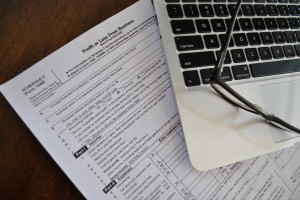Who must file?
There are many great tax benefits to turning your passion into profit. Whether you’re an independent contractor, a direct sales consultant or a tutor for neighborhood kids, the IRS considers you a sole proprietor. Since you were your own boss last year, you earned income, and did not have taxes withheld from that income by someone else (an employer)…you must file a Schedule C – Profit or Loss From Business (Sole Proprietorship) with your income tax return.
What will I need to file?
Taxpayers filing a Schedule C are more likely to be flagged for audit, so make sure you’re organized and have documentation for everything you report. To complete Part I (Income) you may need receipts given to clients, third party billing account statements, or you may have received a 1099-NEC showing the amounts you were paid for the services you preformed. Part II (Expenses) should include items you want to deduct from income, such as: computers, supplies, advertising, website hosting fees, occupational licenses and amounts you paid for legal and/or tax professional assistance.
Where do I report my car and home office expenses?
Use Part IV to report the cost of using your car for business. Taking the standard mileage rate is the simplest way to claim this deduction. Just like any other expense, be sure you record the date and exact mileage to avoid problems later on. I recommend using an app, like BizXpensTrkr, to help you keep track.
If you regularly and exclusively use a portion of your home as your principal place of business (whether you own or rent), you may be able to deduct mortgage interest, insurance, utilities, repairs, and depreciation. The percentage method is most commonly used to determine the amount of expense you should allocate for business use and report on Form 8829. You may also elect to use the newer simplified option that allows a standard deduction of $5 per square foot of home office space used (up to 300 sure feet).
When do I need to pay taxes?
Income minus expenses equals net profit (if you have a positive number) or net loss (if you have a negative number). This number should be reported on 1040, line 12. If you had a net loss, you can reduce your taxable income as well as your tax due. If you had a net profit over $400, you must calculate your self-employment tax using Schedule SE. On the bright side, you can deduct ½ of your self-employment tax to lower your income. You may be required to or choose to pay quarterly estimated taxes this year to avoid an underpayment penalty on next year’s taxes.

